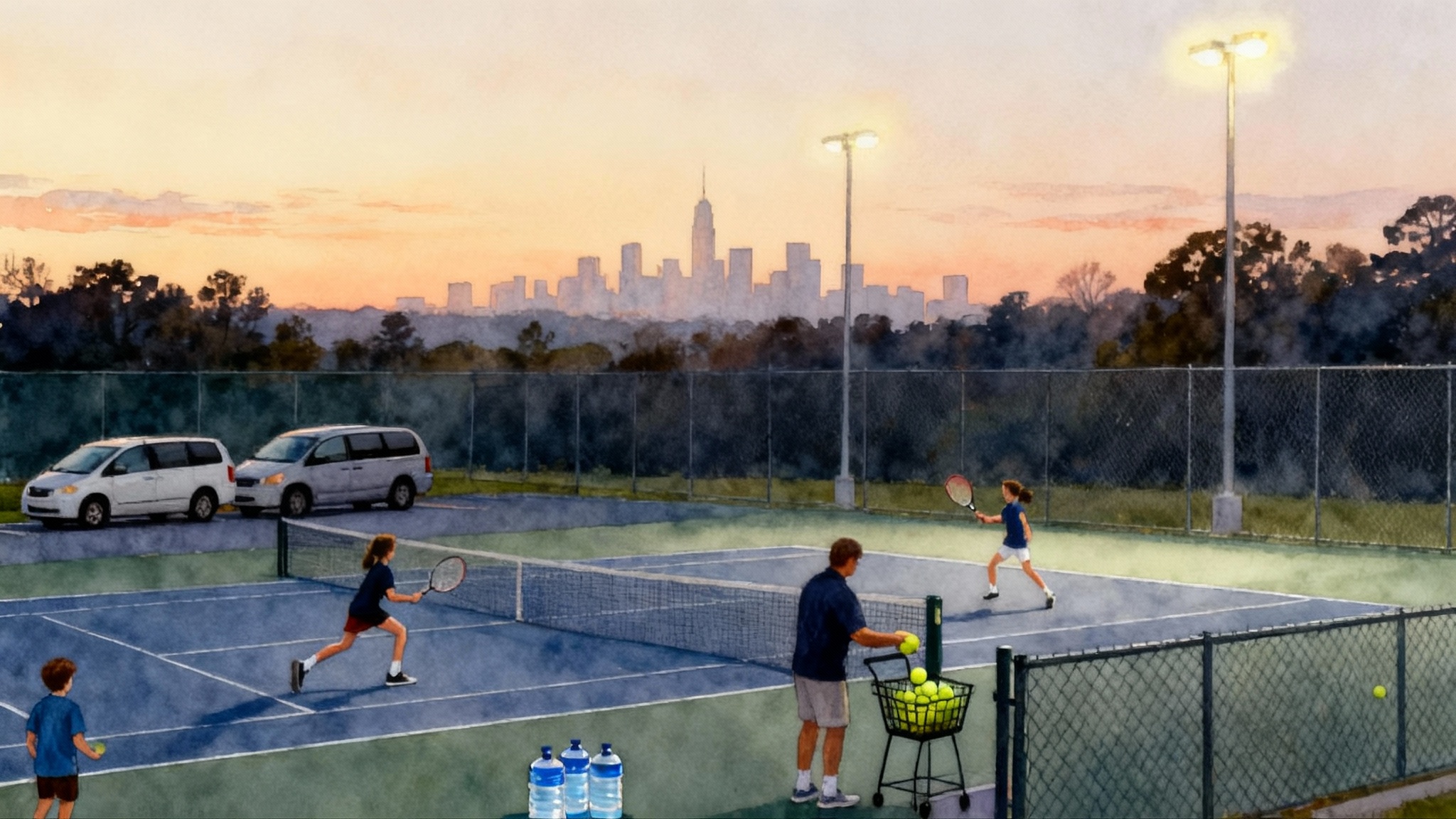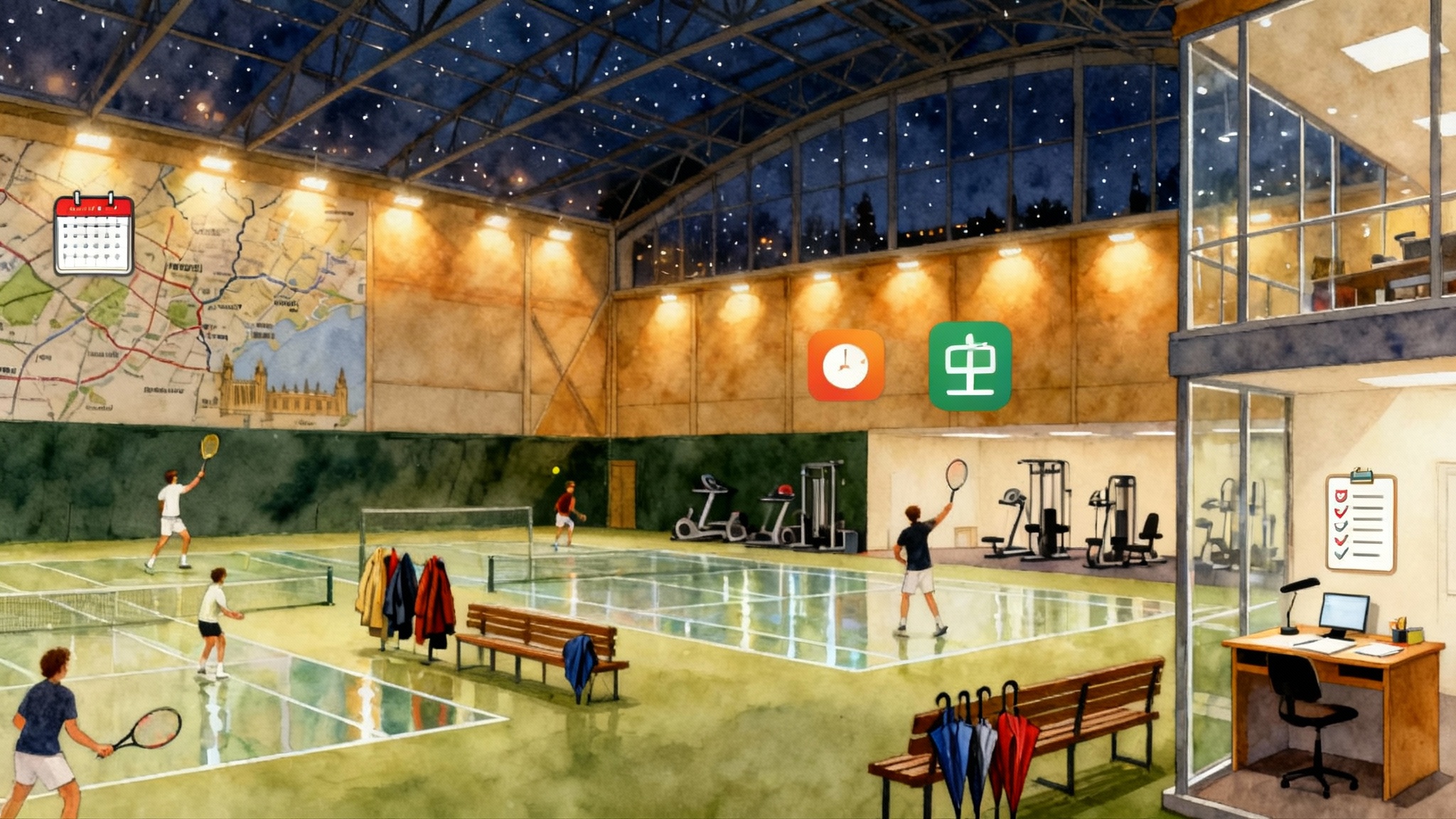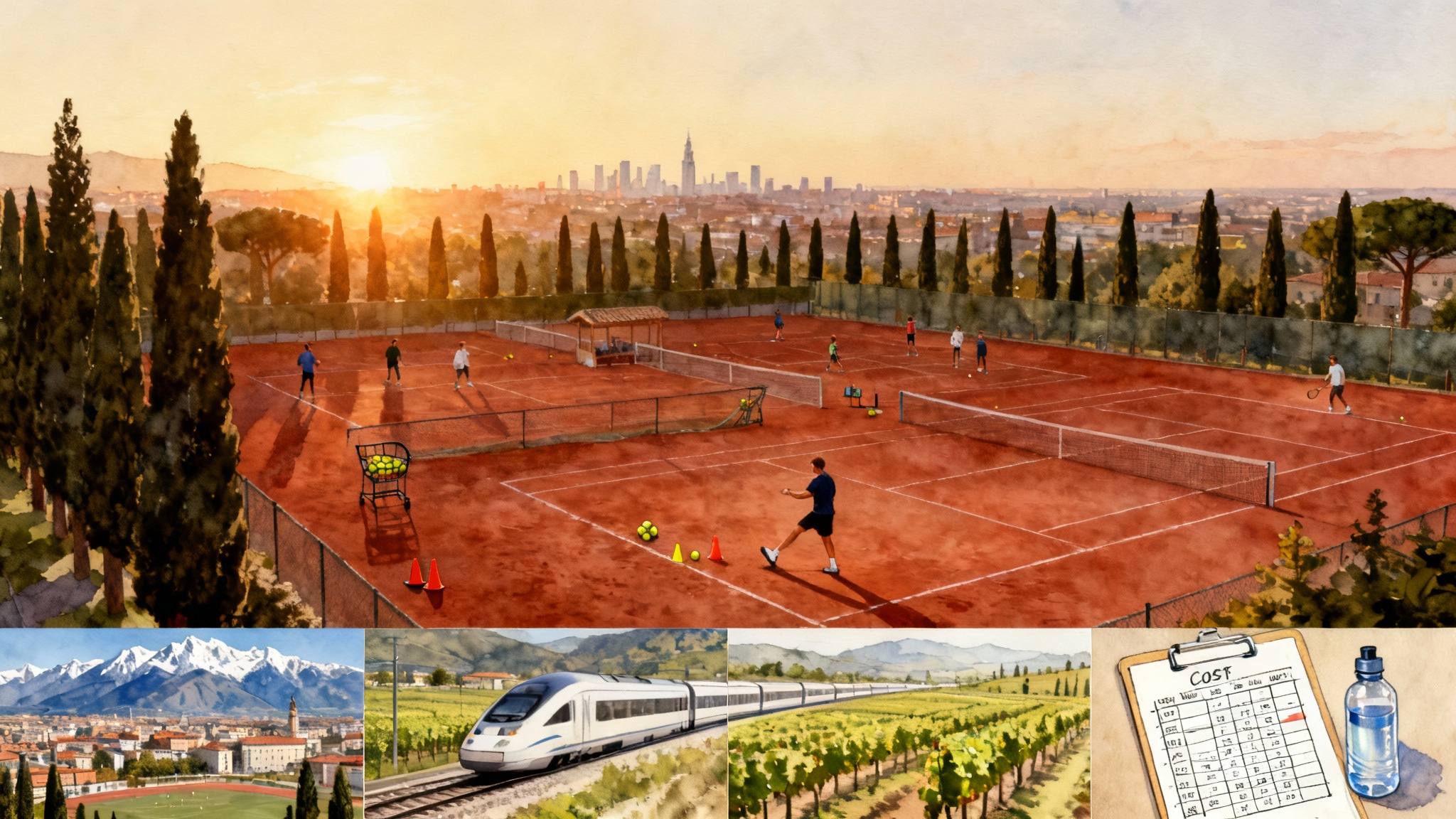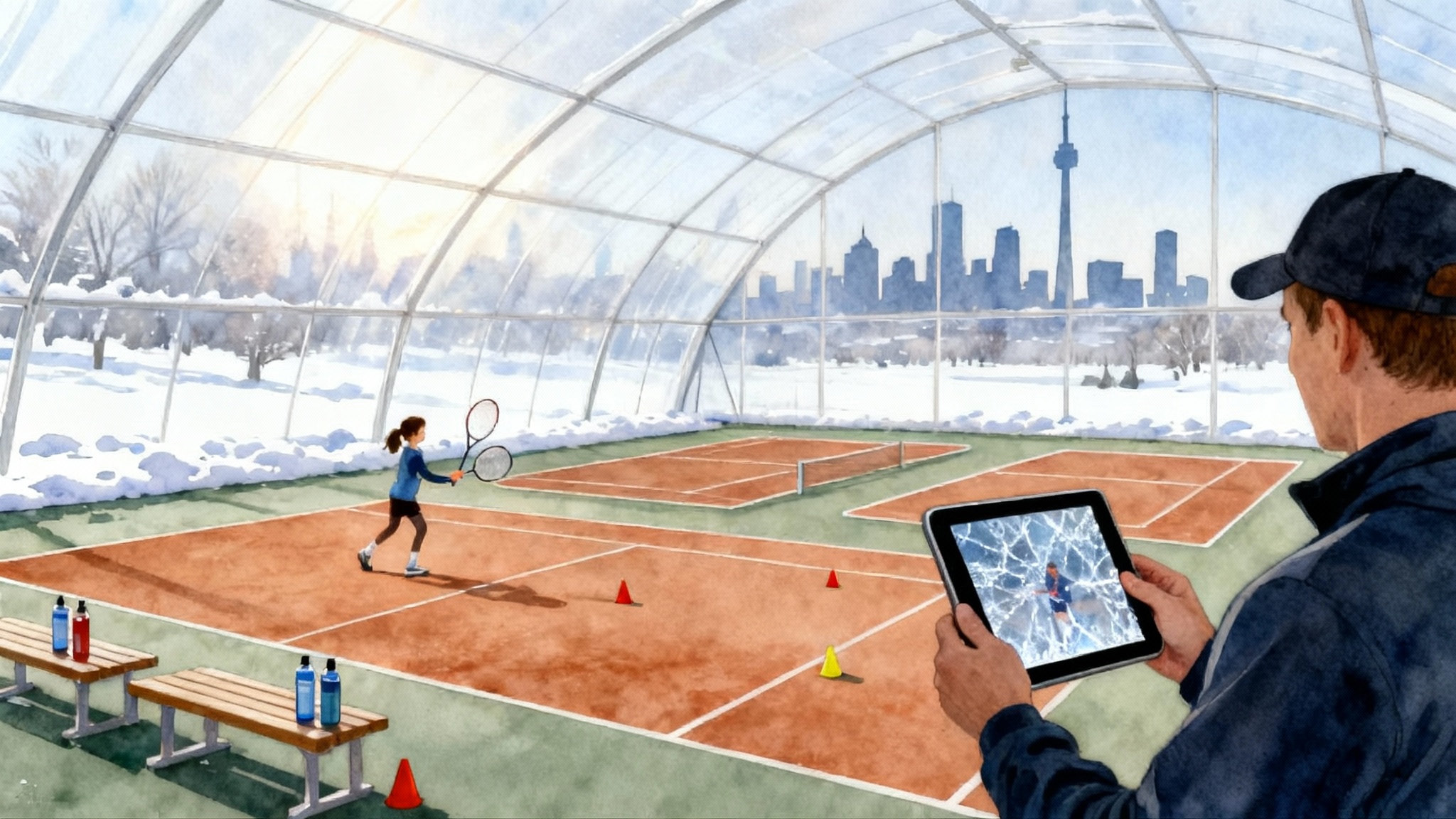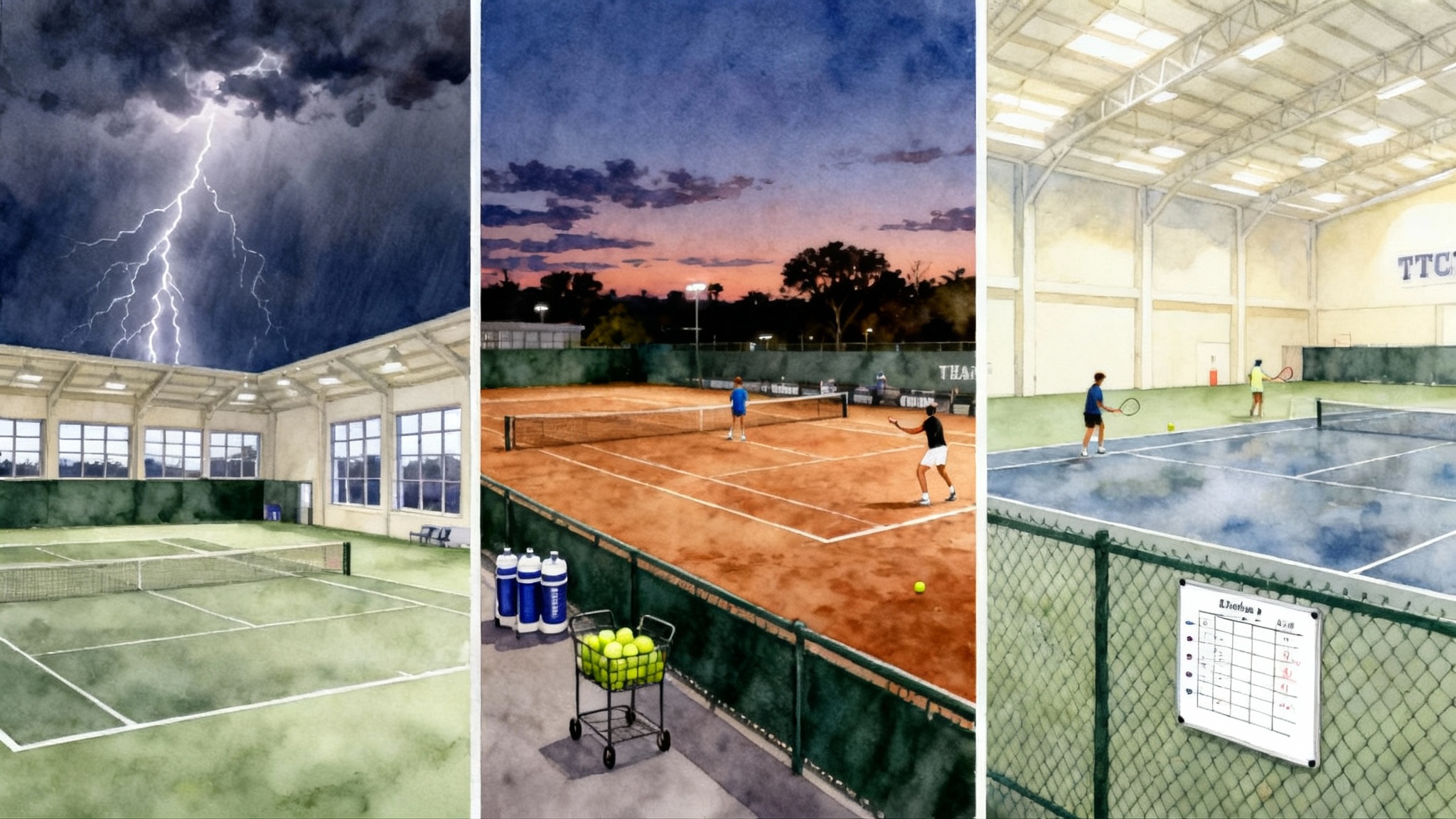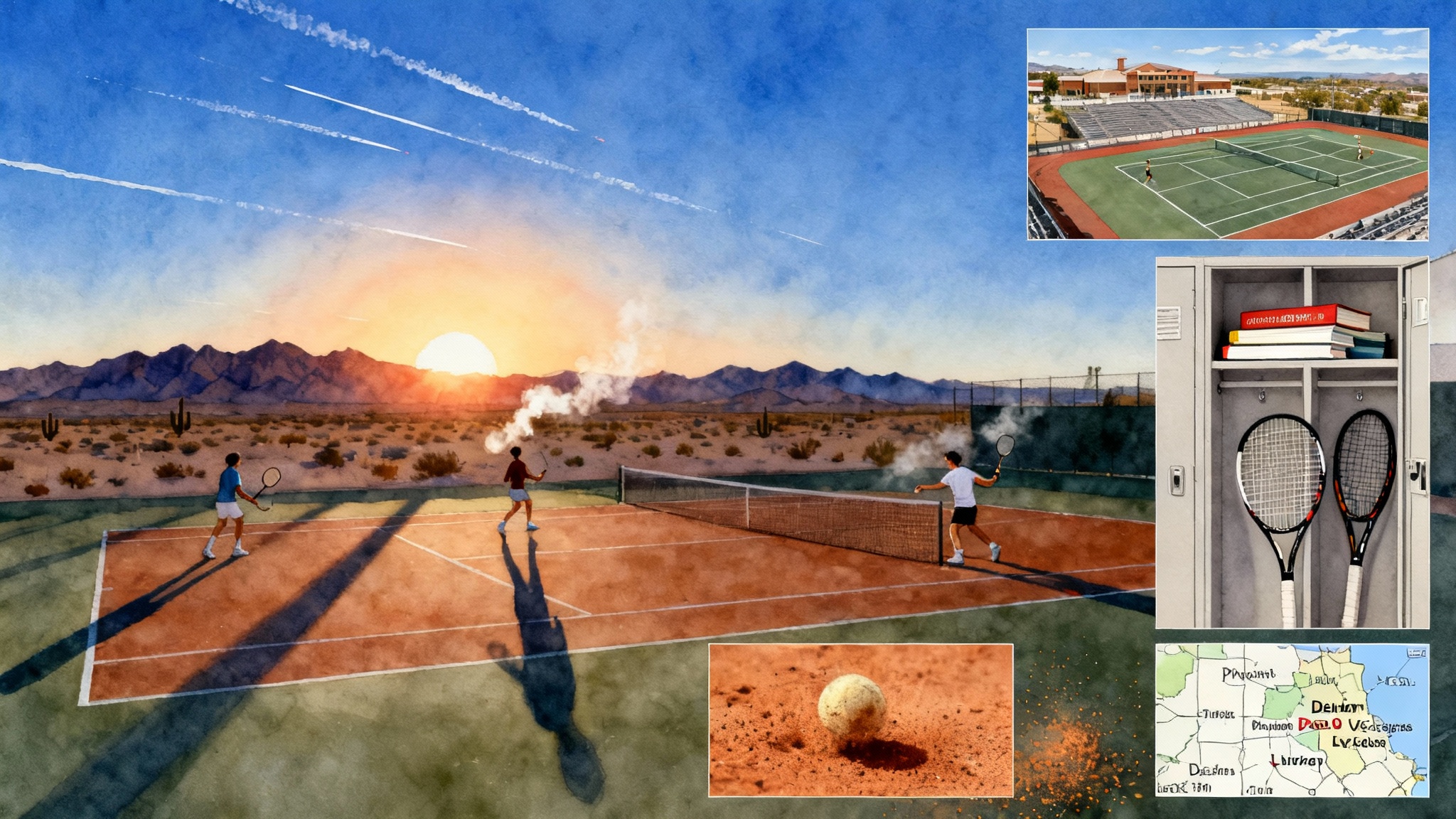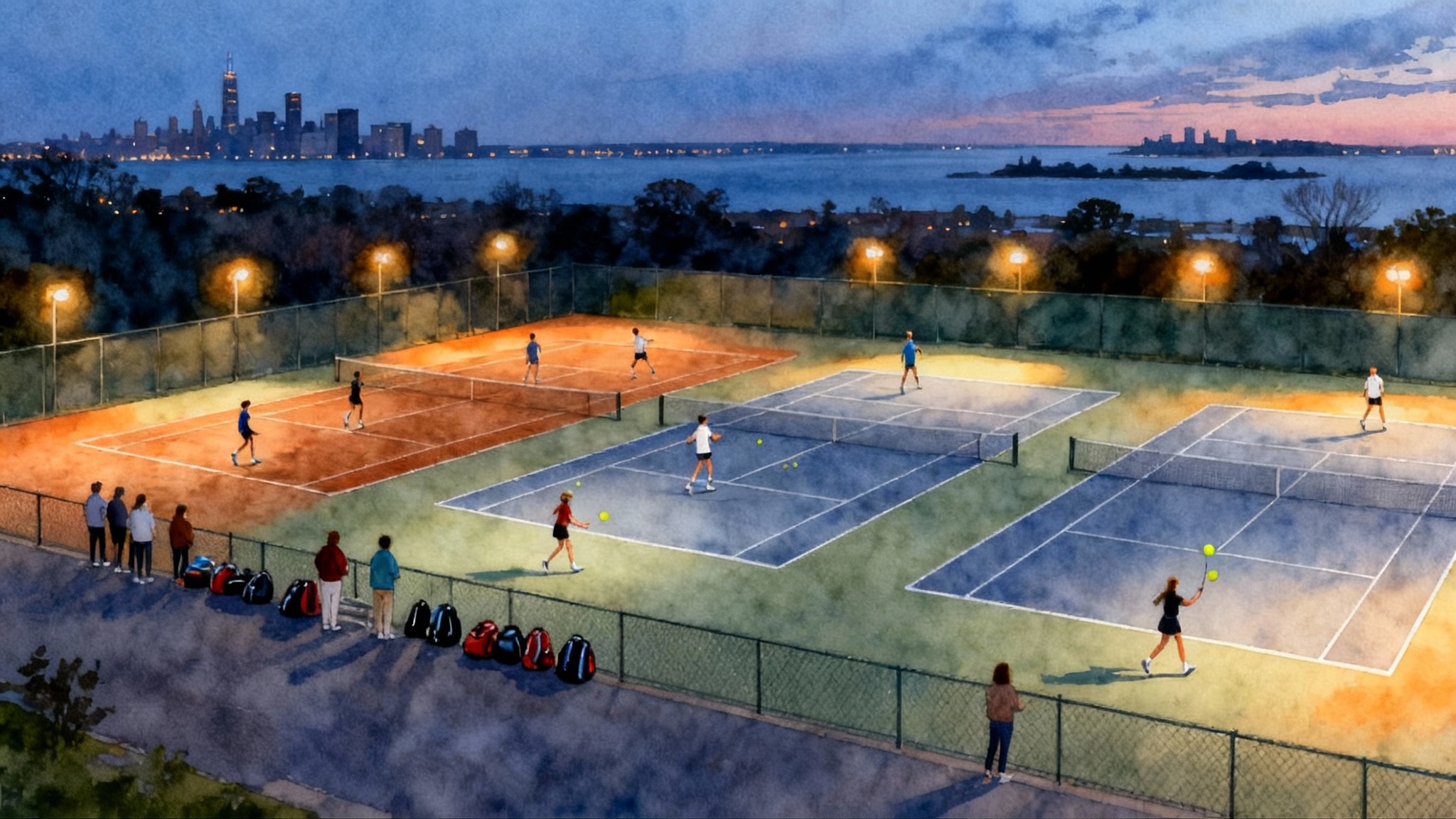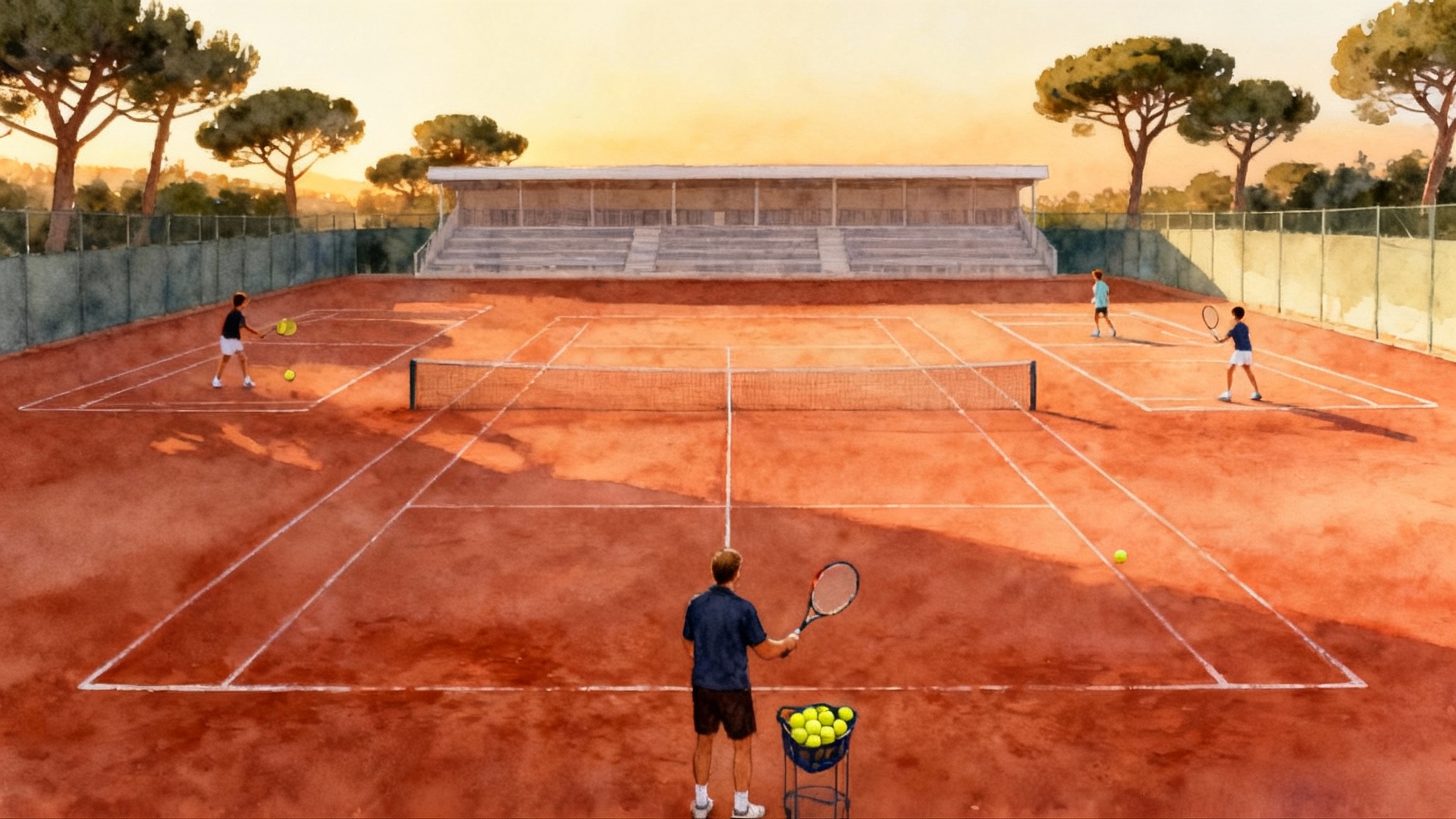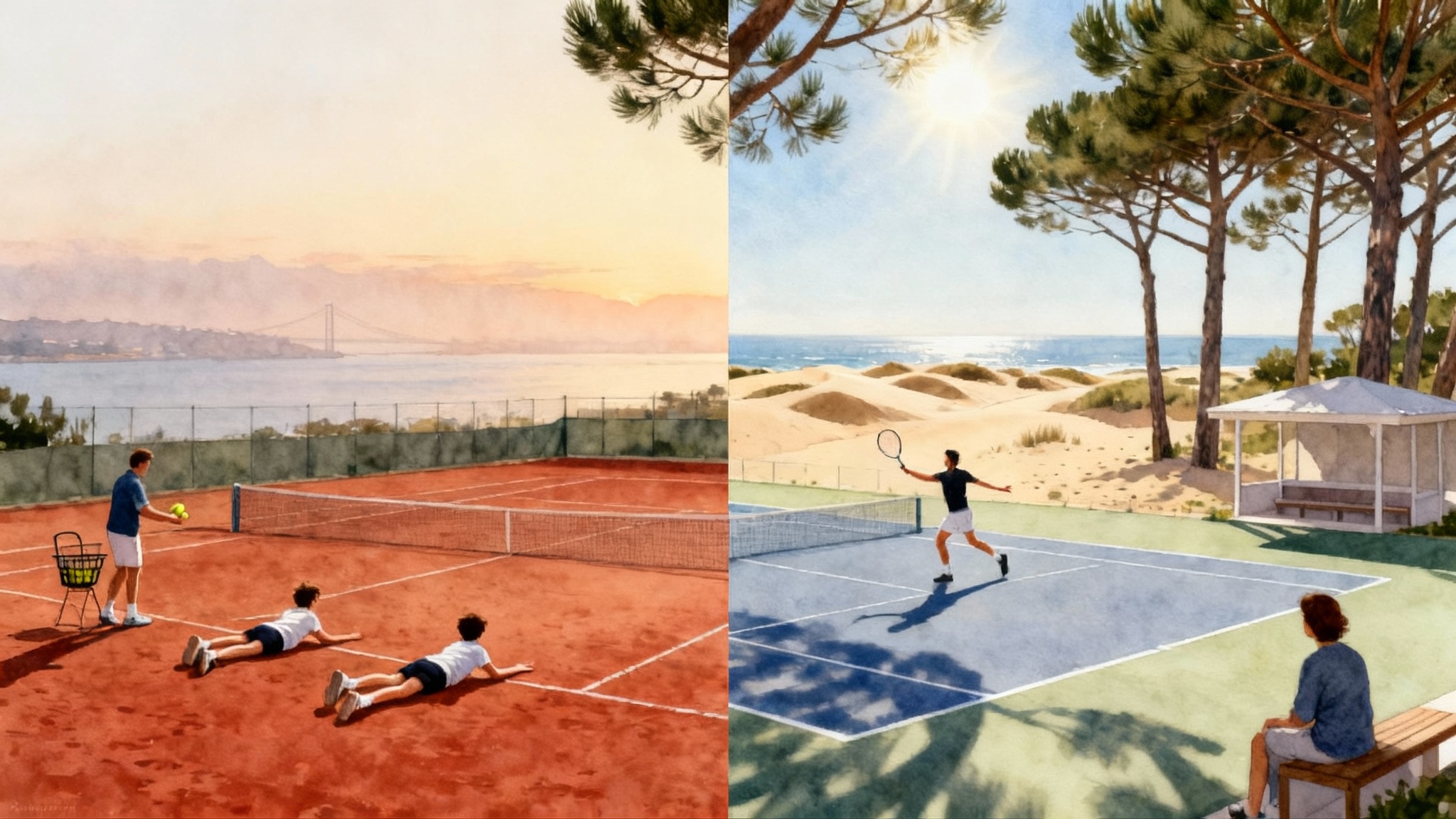Best Tennis Academies in the Carolinas 2025–2026
A practical, parent-focused guide to tennis academies in Charlotte, Raleigh-Durham, Charleston, and Hilton Head. Compare clay access, programs, coaching ratios, costs, boarding options, school links, and UTR or ITF pathways.
How to use this guide
If you are a parent mapping out 2025–2026 for a junior player or planning a training-first family trip, the Carolinas offer a deep mix of resort programs, high-performance academies, and community hubs. This guide keeps it practical. We compare training surfaces, program types, coaching ratios and credentials, cost ranges, boarding versus day options, school partnerships, and the Universal Tennis Rating or International Tennis Federation tournament pathways. Wherever possible, we translate features into what they mean for your child and your calendar.
Two terms to anchor the conversation:
- UTR: The rating most college coaches use to benchmark level. It updates every time your child plays a verified match. Read the official notes on how UTR works.
- ITF World Tennis Juniors: The global pathway that starts at entry-level J30 events and climbs to J500 and Grand Slams. Skim the federation’s ITF pathway basics.
What matters most when choosing
- Surfaces and clay access: Clay rewards movement, patience, and point construction. Hard courts reward first-strike patterns. If your junior aims for college tennis, balanced reps on both matter. Look for regular clay blocks and not just an occasional clay day.
- Coaching ratios and credentials: For development, 4 to 6 players per coach on drilling days is a sweet spot. For tactical or mental themes, smaller pods help. Ask about coach certifications such as USPTA or PTR and which coach handles your child’s age group daily.
- Program types and pathways: High-performance tracks serve tournament juniors with daily drilling, fitness, and match play. Junior development serves 8 to 13 year olds building grips, shapes, and footwork. Adult clinics can be a plus on family trips. Verify weekly match play and weekend tournament coaching.
- Cost ranges in the Carolinas: Group clinics often run 40 to 90 dollars per player per session. Weekly junior camps cluster around 600 to 1,200 dollars. Month-to-month high-performance packages range roughly 1,000 to 2,500 dollars for day programs and 2,500 to 4,500 dollars for boarding, depending on contact hours and housing. Private lessons commonly range 90 to 180 dollars per hour.
- Boarding versus day: Boarding suits regional and international juniors who need a consistent training, housing, and schooling plan. Day programs are ideal for local families, flexible schoolers, or vacation weeks.
- School partnerships: Ask whether the academy works with local schools for flexible schedules or endorses online programs. Request details on early-release letters, supervised study halls, and proctoring.
- Tournament fit: Ask how the academy schedules USTA and UTR events, who travels with the group, and how they set pre- and post-match objectives. For players beginning to chase international points, confirm guidance on IPIN registration and scheduling of first ITF J30 events.
City-by-city mini reviews
Charlotte
Charlotte’s tennis scene is anchored by well-run club academies and a limited but growing set of clay options. The metro’s strengths are accessibility, year-round play, and a deep local tournament calendar.
- Who it fits: Players who live in the region or families who want an easy fly-in via Charlotte Douglas International Airport, plus strong weekday structure. It works well for juniors who want more hard-court reps and adults who prefer consistent clinic times.
- Example programs: Club-based academies and family-focused racquet clubs with high-performance pods after school, weekend match play, and seasonal camps.
- Surfaces: Mostly hard courts with green clay lines at select clubs. Clay access is good enough for weekly blocks, but not as comprehensive as the coast.
- Coaching ratios and staff: Typical drilling ratios of 4 to 6 per coach. Ask who runs the performance pod, how often the head coach is on court, and whether fitness is integrated or add-on.
- Cost signals: Charlotte offers some of the most cost-efficient high-performance day blocks in the Carolinas. Boarding is not a primary Charlotte strength, so traveling boarders typically look elsewhere.
Raleigh–Durham
The Triangle blends community facilities, university energy, and serious junior depth. Families benefit from a wide tournament menu and easier logistics than beach towns.
- Who it fits: Day students in strong public or private schools, families who want a strong combination of hard and clay, and tournament-heavy schedules without resort pricing.
- Example programs and hubs: Longtime training anchors plus public hubs with dozens of courts and frequent events. University towns add hitting partners and guest pros.
- Surfaces: Abundant hard courts and reliable green clay. Indoor options exist in winter at select clubs.
- Coaching ratios and staff: Expect structured after-school blocks and weekend match play with 4 to 6 players per coach on average. Ask whether live-ball days, pattern days, and competitive sets rotate predictably.
- Cost signals: Similar to Charlotte for clinics. Good value for frequent UTR match nights and local events that feed the rating consistently.
Charleston
Charleston is a high-performance magnet with proven pipelines to college tennis, plus a rich clay tradition and tournament pedigree.
- Who it fits: Juniors targeting college rosters who want daily clay exposure and families who want a destination city with real training.
- Example programs: Performance-focused academies with strong tournament culture and deep draws year-round.
- Surfaces: Strong green clay access alongside hard courts. Humidity in summer develops legs and patience, which matters for college-bound players.
- Coaching ratios and staff: Performance pods can be selective. Ask how groups are leveled, who travels to tournaments, and how video is used for stroke or tactic breakdowns.
- Cost signals: Performance training and tournament travel raise budgets here. Day programs are common; limited boarding may be arranged through partner housing or host families.
Hilton Head Island
Few places in the country concentrate so much tennis in such a compact, family-friendly setting. Hilton Head pairs beach logistics with varied training choices.
- Who it fits: Families who want a serious training week that still feels like a vacation, juniors who need clay blocks and match play, and older juniors who may explore boarding options.
- Example programs: Smith Stearns Tennis Academy for high-performance with a boarding pathway, and Palmetto Dunes Tennis and Pickleball for a flexible, family-first training base. Longstanding camp providers also add seasonal volume.
- Surfaces: Some of the most reliable green clay access in the Carolinas, plus hard courts. Clay-heavy weeks are easy to build here.
- Coaching ratios and staff: Expect vacation-friendly scheduling for adults and juniors alongside performance pods. Ask how the staff balances drop-in resort play with academy groups during peak weeks.
- Cost signals: Resort convenience often means premium pricing for courts and privates. That said, the ability to combine tennis with bikeable lodging and beach time can reduce family stress and travel costs.
Spotlight: Palmetto Dunes Tennis & Pickleball Center
Palmetto Dunes is the rare place where juniors can get real clay reps while parents lock in daily adult clinics, and everyone meets for dinner without a long drive. The center mixes year-round junior development, seasonal high-performance weeks, and one of the largest public pickleball scenes on the island. For families, that means a predictable daily rhythm: juniors drill and play sets in the morning, adults book a clinic or a private, then the family hits the beach or bikes the resort paths in the afternoon.
- Training surfaces: Multiple green clay courts keep the footwork honest and the points longer. Hard courts are available for serve and first-strike days.
- Programs: Juniors can slot into development or performance blocks depending on week and level. Adults have daily clinics plus targeted stroke or serve sessions. Private lessons are plentiful in non-holiday windows.
- Coaching ratios: Group sessions commonly operate in the 4 to 6 per coach range. For match-oriented learning, ask for a smaller pod or a shadow set under coach supervision.
- Who it fits: Families who want a no-car week, mixed goals among siblings, and predictable training windows. Younger juniors and rising high school players get the most from the structured but friendly environment. College-track juniors might use Palmetto Dunes as a clay-focused microcycle before tournaments, then add a day or two of match play at a nearby program to spike volume.
- Watchouts: Peak weeks fill early. Book courts, clinics, and privates well in advance, and confirm the high-performance block for your child’s level. If your junior needs two-a-days, plan a second session with a private or coordinated match play in the afternoon.
Scenario-based picks
- Your child is a 10 to 12 year old learning grips and shapes: Choose a program with clear progressions and a development court. Charlotte and Raleigh–Durham club academies offer consistent after-school blocks and plentiful weekend match play.
- Your child is 13 to 16 and targeting college tennis with a heavy clay block this spring: Charleston or Hilton Head Island. Book a two-week cycle that blends daily clay drilling with two UTR match sessions per week.
- You want a family trip that still moves the needle: Hilton Head Island at Palmetto Dunes. Adults and juniors both train, then regroup for beach time.
- You need strong day programming near an easy airport: Raleigh–Durham for structured high-performance blocks at large public hubs. Charlotte is a close second.
- You want a boarding pathway plus clay: Hilton Head Island with Smith Stearns. Confirm school coordination and travel support to tournaments.
UTR and ITF pathways made simple
Think in building blocks.
- Block 1: Make UTR your weekly metronome. Verified singles sets raise or confirm the rating and help a coach target your child’s level. Look for academies that schedule recurring match nights and weekend events.
- Block 2: Add ITF when your child can consistently compete at a UTR level that matches J30 qualifying or main draw. The goal is to encounter international styles and score ranking points that open future draws.
- Block 3: Blend college showcases and campus visits in 2026 if your athlete is a rising junior or senior. Use UTR to target realistic roster levels and email coaches with a one-page player profile, links to match video, and a tournament calendar.
Seasonal planning for 2025–2026
- Winter, December to February: Charlotte and Raleigh–Durham offer the most indoor backups if cold snaps hit. Hilton Head and Charleston remain very playable most days; wind and rain are the main variables.
- Spring, March to May: Peak clay. Charleston and Hilton Head Island shine, but book early for spring breaks. Allergy season can be real in the Triangle, so plan hydration and recovery.
- Summer, June to August: Heat plus afternoon storms are common. Run morning sessions for quality, then schedule match play in early evening. Thunderstorms often pass quickly, so stay flexible instead of canceling the day.
- Fall, September to November: Many families see the best training quality here. Temperatures are ideal, and clay holds up beautifully. Coastal storm season is something to monitor in September and October; buy flexible travel fares when possible.
Travel logistics for families
- Airports: Charlotte Douglas International Airport and Raleigh–Durham International Airport serve most major carriers with frequent nonstops. Charleston International Airport is efficient with quick rides to Daniel Island or Mount Pleasant. Hilton Head Island has a small airport; Savannah or Hilton Head International is the common alternative, about an hour from island resorts.
- Commutes: Charlotte and Raleigh–Durham have 15 to 30 minute drives to most clubs depending on traffic. Charleston ranges 15 to 35 minutes depending on bridge traffic. Hilton Head Island can be car-light; many families bike between resort lodging and courts.
- Lodging: For Charleston and Charlotte, short-term rentals near clubs keep mornings simple. On Hilton Head Island, resort villas with kitchenettes make early breakfasts and recovery snacks easy.
- Rain plans: Ask if your academy has priority at covered or indoor courts. If not, hold a backup window later in the day for sets.
Sample budget snapshot for a week
Every program prices differently, but this outline helps you compare apples to apples.
- Training package: 5 half-days of junior high-performance or development, 600 to 1,200 dollars. Add two privates at 90 to 180 dollars each if your junior needs serve or forehand work.
- Adult clinics: 3 sessions at 40 to 60 dollars each per parent.
- Court time for family hits: 2 to 4 hours, sometimes included, sometimes 20 to 40 dollars per hour.
- Tournament or match play: One UTR match session or local event, 25 to 60 dollars.
- Lodging and transport: Varies widely. Triangle and Charlotte hotels are budget-friendly outside sports weekends. Hilton Head resort villas can save on meals and reduce driving.
What to ask before you book
- Grouping: How are players grouped, and how often can my child move groups as level changes?
- Weekly plan: Which days are dedicated to patterns, live ball, sets, and fitness? Can I get the plan in writing?
- Match play: How many verified matches can my child play in a week, and who coaches court-side?
- Clay access: On which days can my child train on clay, and for how long?
- Video: Do you record and review matches or key strokes? How do players get feedback?
- School coordination: For day or boarding players in the school year, what documentation and study support exists?
- Weather: What is your rain plan and refund or credit policy?
Quick picks by city
- Charlotte: Best for structured day programs, deep pool of hitters, and efficient travel. Great for families that want predictable weekly rhythm and plenty of hard-court volume.
- Raleigh–Durham: Best value for frequent verified match play and balanced hard and clay reps. Ideal for families who want community scale without resort pricing.
- Charleston: Best for clay-first performance culture and college-track ambition. Bring a plan and a budget for tournament travel.
- Hilton Head Island: Best all-around for family weeks. Train hard on clay in the morning, then decompress by the ocean. Layer in boarding options if your junior aims long term.
The bottom line
The Carolinas do not force a single choice. Charlotte and Raleigh–Durham deliver structure and value for day students who need a steady cadence of drilling and verified match play. Charleston and Hilton Head Island tilt toward clay, performance culture, and family-friendly training weeks that still move the needle. If your junior is college bound, build the year around two anchors: weekly UTR match touches and periodic clay blocks. If you are comparing the Southeast, our Florida tennis academies guide offers additional options for winter or spring training blocks.
